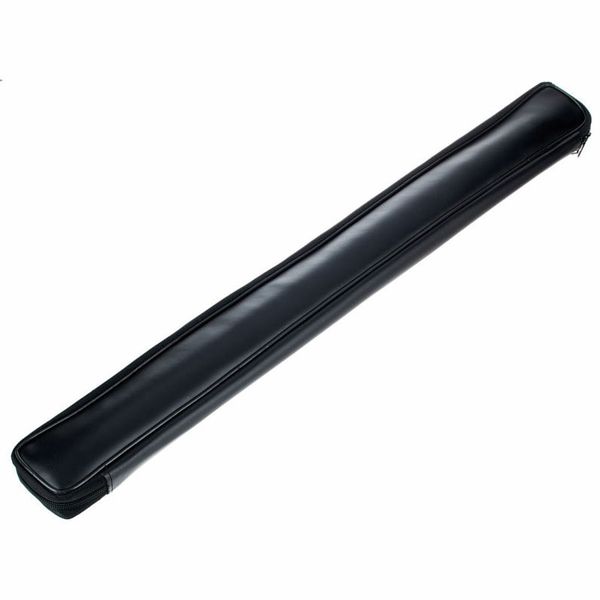A las muchas excelencias que esta flauta tiene tanto en su confección como en su desempeño, sólo puedo ponerle una tacha menor, de índole puramente estética, que en nada afecta a su sonoridad ni al modo de tocarla: la laca usada en la superficie de la caña tiene un tono que, a mi gusto, desvirtúa la naturaleza del bambú, al que confiere un acabado un tanto artificioso.
El xiao no deja de ser un shakuhachi con prestaciones incrementadas, y quienes se hayan iniciado en la flauta japonesa, como es mi caso, se encontrarán con nuevos desafíos y alicientes. Entre los desafíos, cabe destacar por un lado la digitación, que debe distribuirse sobre ocho orificios en lugar de cinco, y por otro el tipo de embocadura, que parece un utaguchi reducido en apertura a su estricta funcionalidad, lo que le otorga mayor precisión al flujo de aire a la vez que complica un poco la técnica de soplado; entre los alicientes, el mayor de ellos es el de poder pasar de una escala pentatónica a la diatónica. A este respecto debo aclarar que la nota fa con que se anuncia el instrumento hace referencia a la que produce el orificio intermedio; no es, por tanto, la nota tónica, que en realidad corresponde al do. La afinación de mi xiao «Master F» viene como sigue:
1 (todos los hoyos tapados) = do
2 = re
3 = re#
4 = mi
5 = fa
6 = sol
7 = sol#
8 = la
9 (todos los hoyos abiertos) = si
Quiero, por último, comentar que el ánima del bambú no se ha rectificado con pasta, lo que permitiría calificar esta flauta como «jinashi».






















